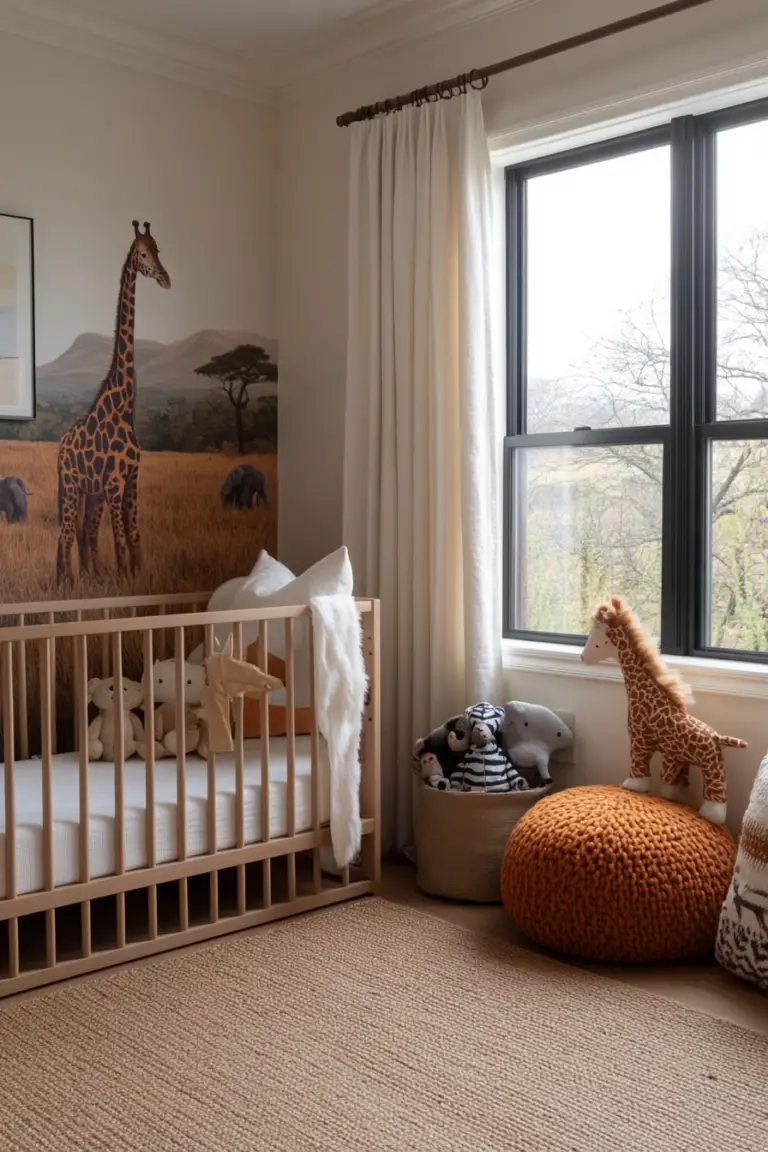How to Make a Zen Garden in Your Own Home
When you think of Zen gardens, you might picture expansive outdoor spaces with meticulously raked sand and strategically placed rocks. But guess what? You don’t need a sprawling yard to embrace this tranquil style—you can transform your home into a peaceful oasis with just a few simple touches!
Embracing the Zen Philosophy
At its core, Zen decor is all about simplicity, balance, and harmony. It’s not just a design style; it’s a way of life that promotes mindfulness and inner peace. By incorporating natural elements and minimalist principles, you can create a space that calms the mind and soothes the soul.
Key Elements of Zen Garden Home Decor
- Natural Materials: Opt for wood, stone, bamboo, and natural fibers to bring the essence of nature indoors.
- Neutral Color Palette: Stick to soothing shades like soft whites, earthy browns, and gentle greens to create a calming atmosphere.
- Minimalism: Less is more! Clear out the clutter and focus on essential pieces that offer both function and beauty.
- Water Features: Incorporate a small indoor fountain or a simple water bowl for the soothing sounds of flowing water (and good vibes).
- Greenery: Add plants like bonsai trees, bamboo stalks, or peace lilies to infuse life and freshness into your space.
Quick Wins to Zen-ify Your Home
- Create a Mini Zen Garden: Get crafty and assemble a tabletop Zen garden with sand, stones, and a tiny rake—it’s a fun (and free!) DIY project.
- Declutter Your Space: A tidy room leads to a tidy mind. Remove unnecessary items to promote a sense of peace.
- Incorporate Soft Lighting: Swap harsh overhead lights for soft lamps or candles to create a warm, inviting glow.
- Use Natural Fabrics: Choose linens, cottons, and other natural textiles for your cushions and curtains to enhance the organic feel.
- Add Calming Scents: Use essential oil diffusers with fragrances like lavender or eucalyptus to elevate relaxation.
Budget-Friendly Tips
- Shop Secondhand: Thrift stores and flea markets are gold mines for finding unique, nature-inspired decor without breaking the bank.
- DIY Decor: Craft your own wall art using materials like driftwood, pressed leaves, or simple line drawings.
- Repurpose What You Have: Turn that old wooden stool into a plant stand or use stones from your last hike as decorative accents.
1. Simplify Your Design
Zen gardens embrace simplicity, focusing on essential elements like sand, rocks, and minimal plant life. Opt for a minimalist layout that avoids clutter and distractions, allowing each element to shine and contribute to the overall harmony.
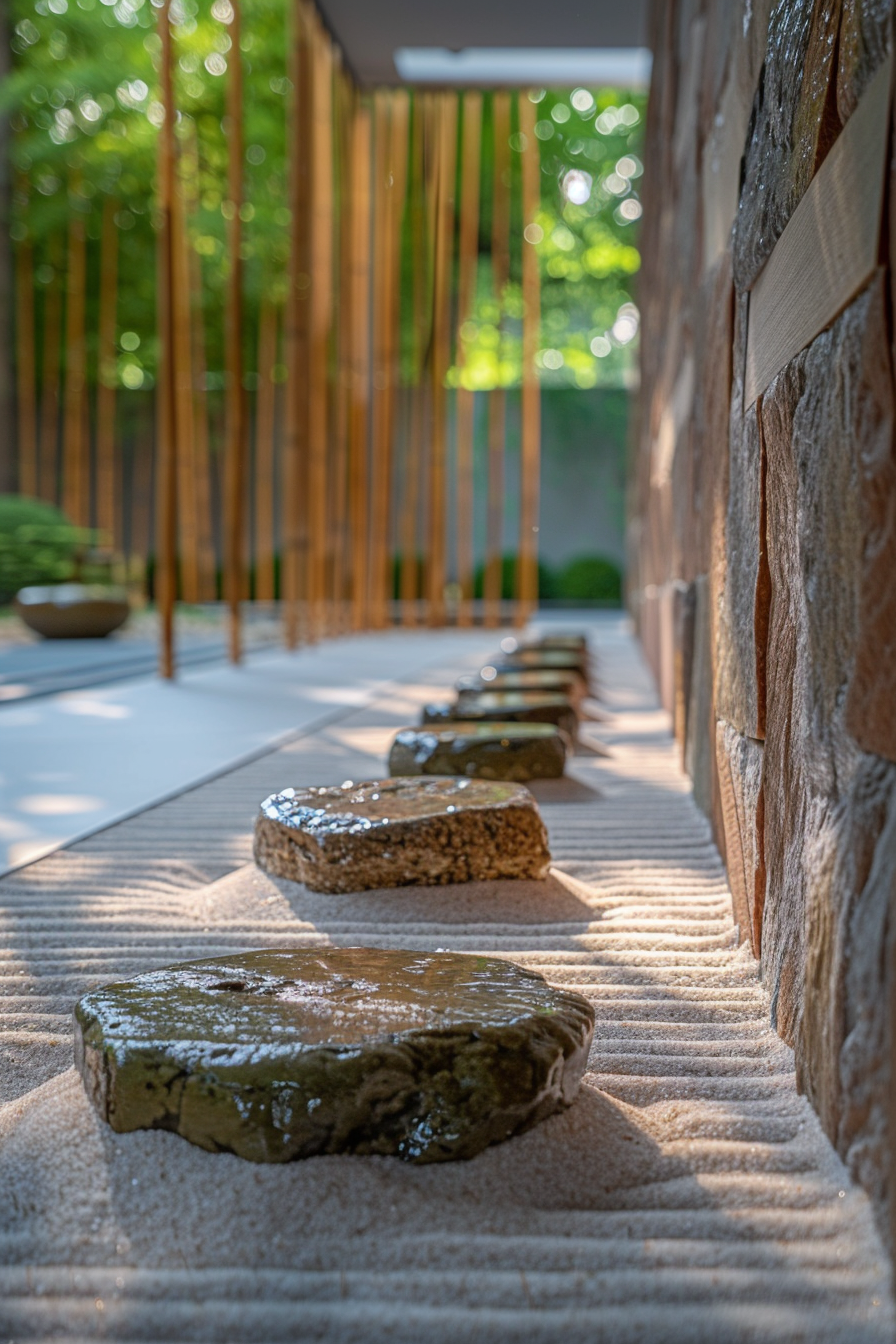
2. Choose Natural Elements
Incorporate natural materials like stone, gravel, and wood to maintain the authenticity of a Zen garden. Select elements that blend seamlessly with the environment, creating a harmonious and organic space that feels part of nature.
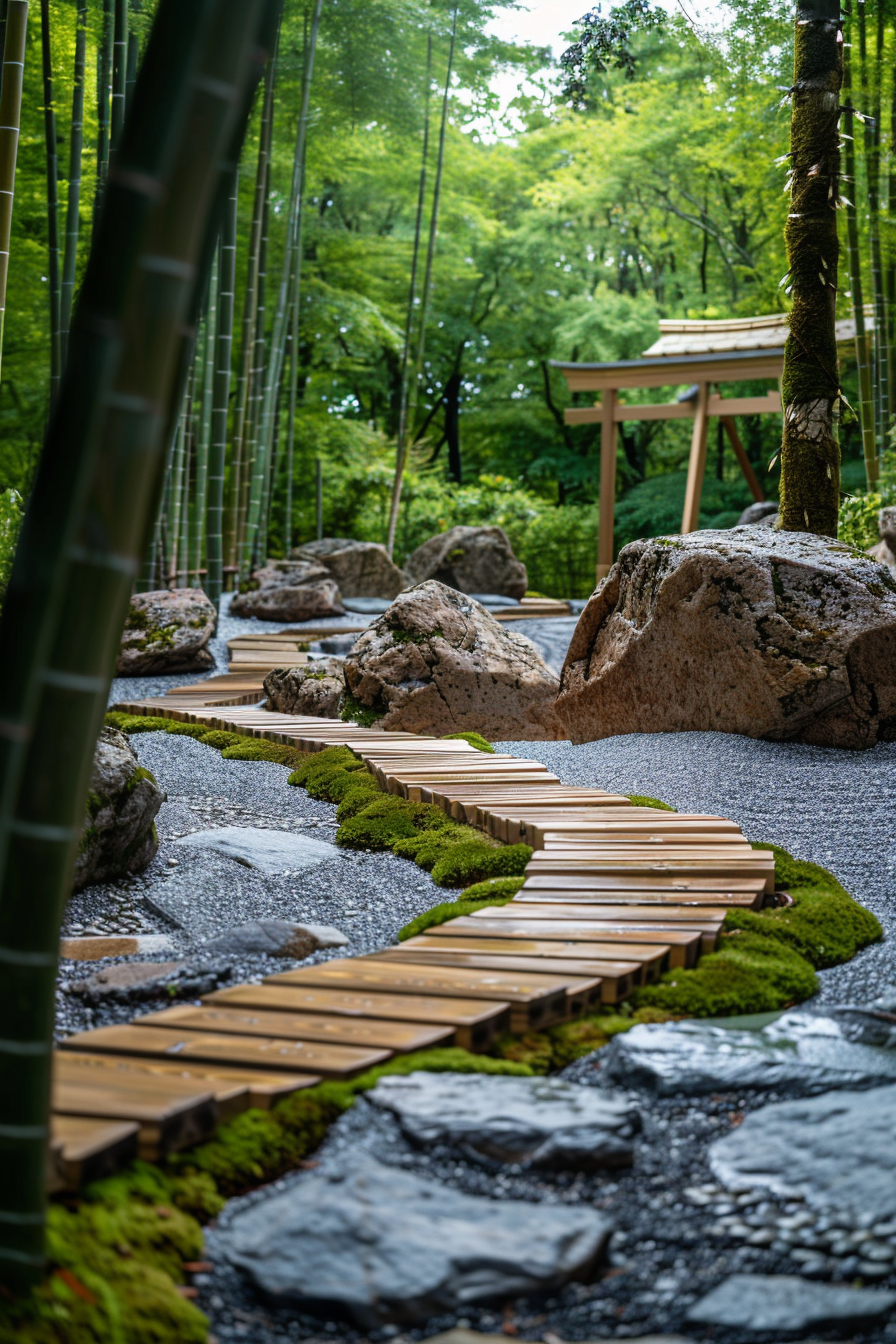
3. Focus on Balance and Harmony
Balance is a key principle in Zen garden design. Arrange elements in a way that feels harmonious and proportionate, with careful consideration of the relationship between different components like sand, rocks, and plants.
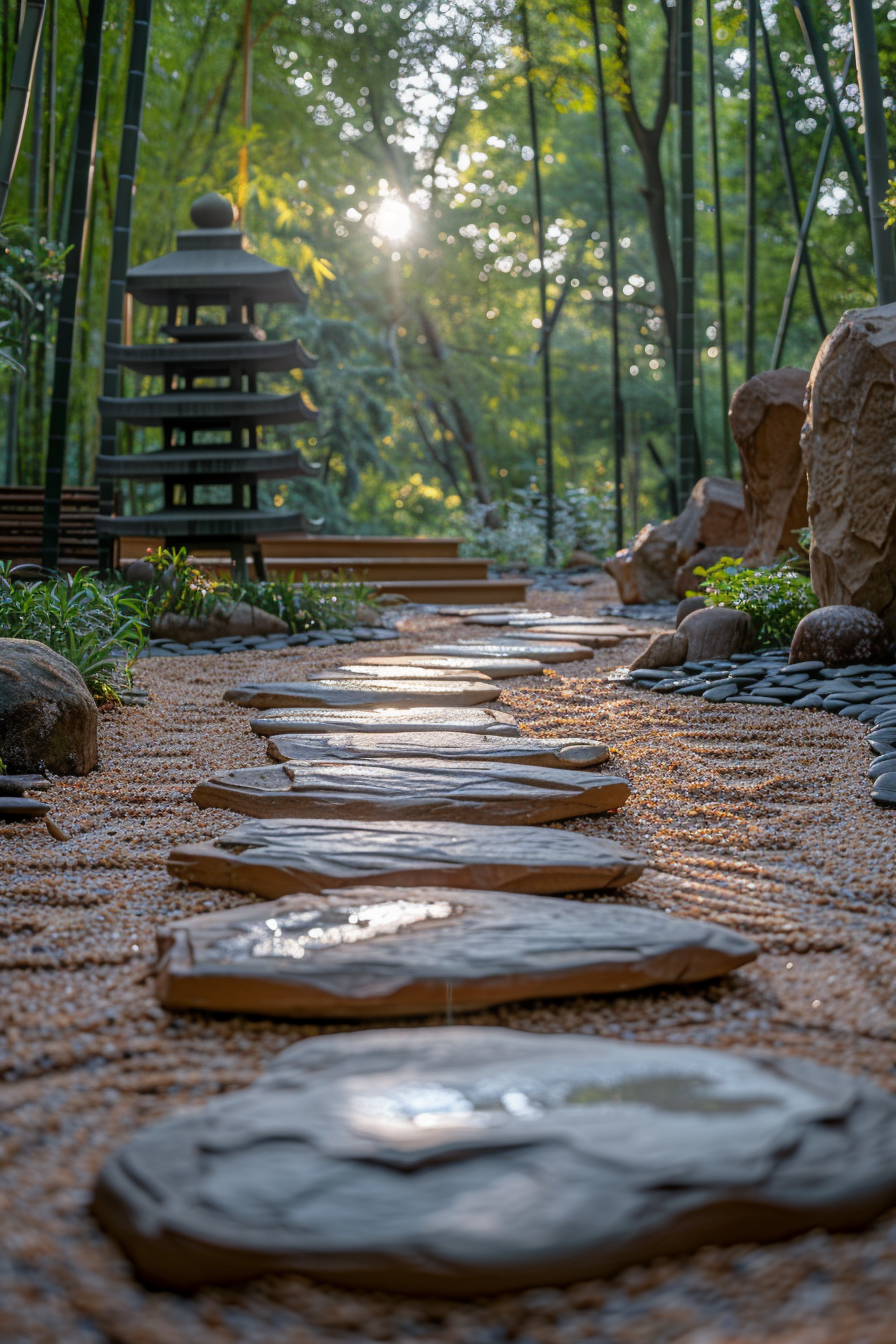
4. Incorporate Water Features
Water symbolizes calm and clarity in Zen gardens. Introduce features like a small pond, fountain, or stream to add a soothing auditory element, enhancing the sensory experience and promoting relaxation.

5. Use Moss for Ground Cover
Moss is a traditional element in Zen gardens, offering a soft, green ground cover that adds texture and depth. Incorporate moss between stones or in shaded areas to enhance the garden’s natural beauty and provide a lush, inviting appearance.
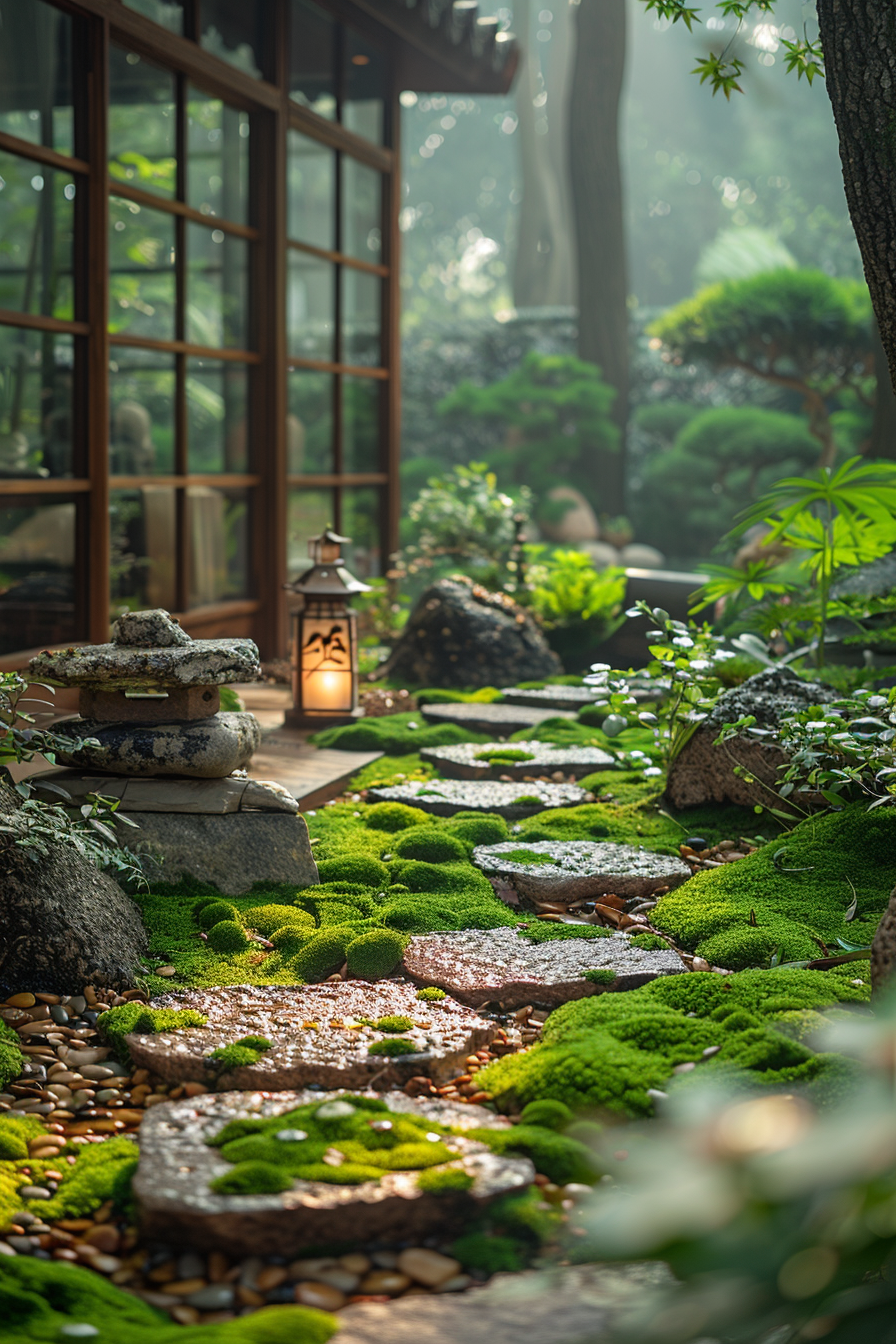
6. Create Raked Sand Patterns
The act of raking sand in Zen gardens is meditative, symbolizing water flow. Design intricate patterns in the sand to mimic waves, adding an element of dynamic movement and enhancing the garden’s tranquil ambiance.
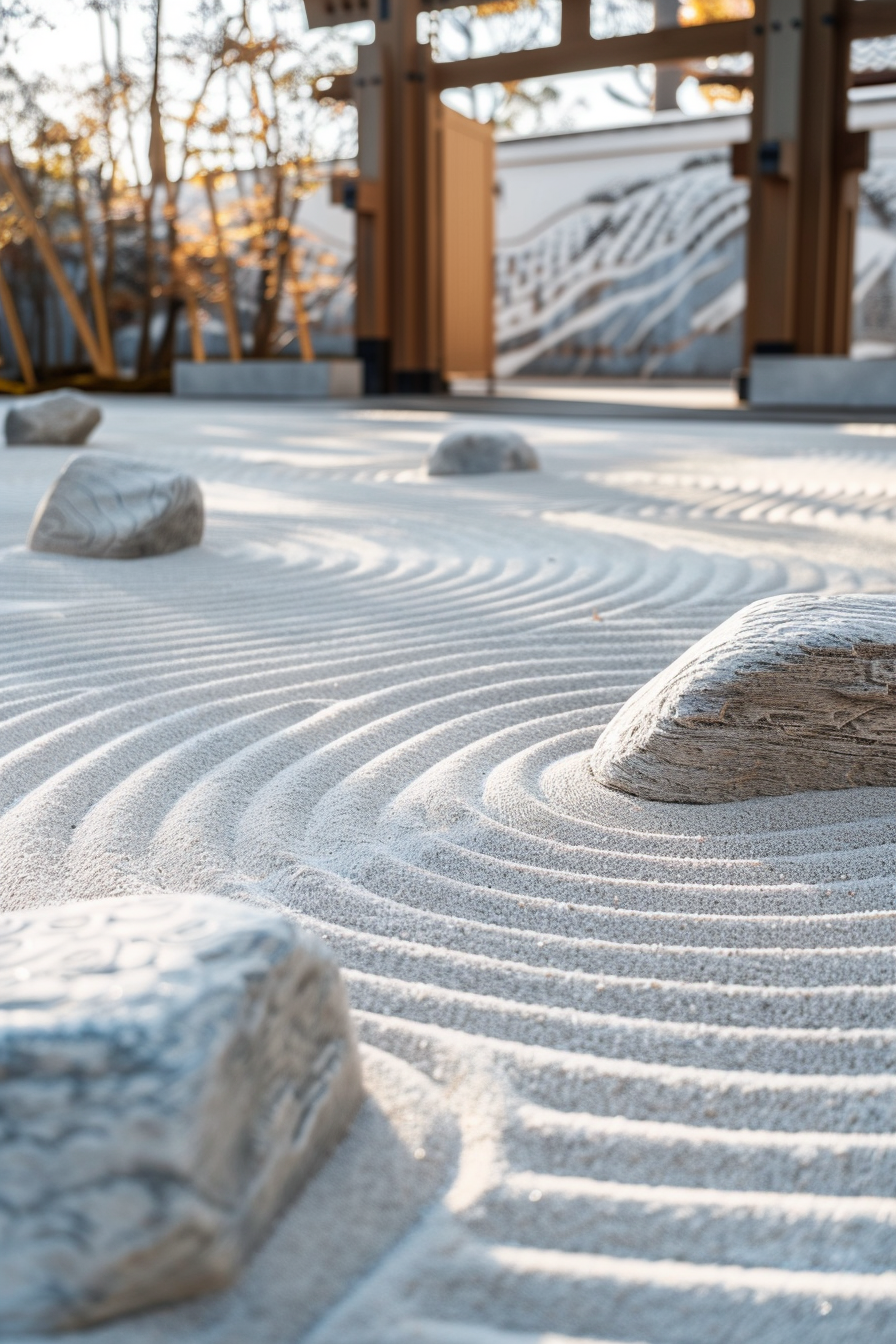
7. Incorporate Pathways and Steps
Pathways and steps guide movement and exploration within a Zen garden. Use natural materials like stone or wood to create winding paths that invite slow, mindful walking, encouraging reflection and a deeper connection with the garden.
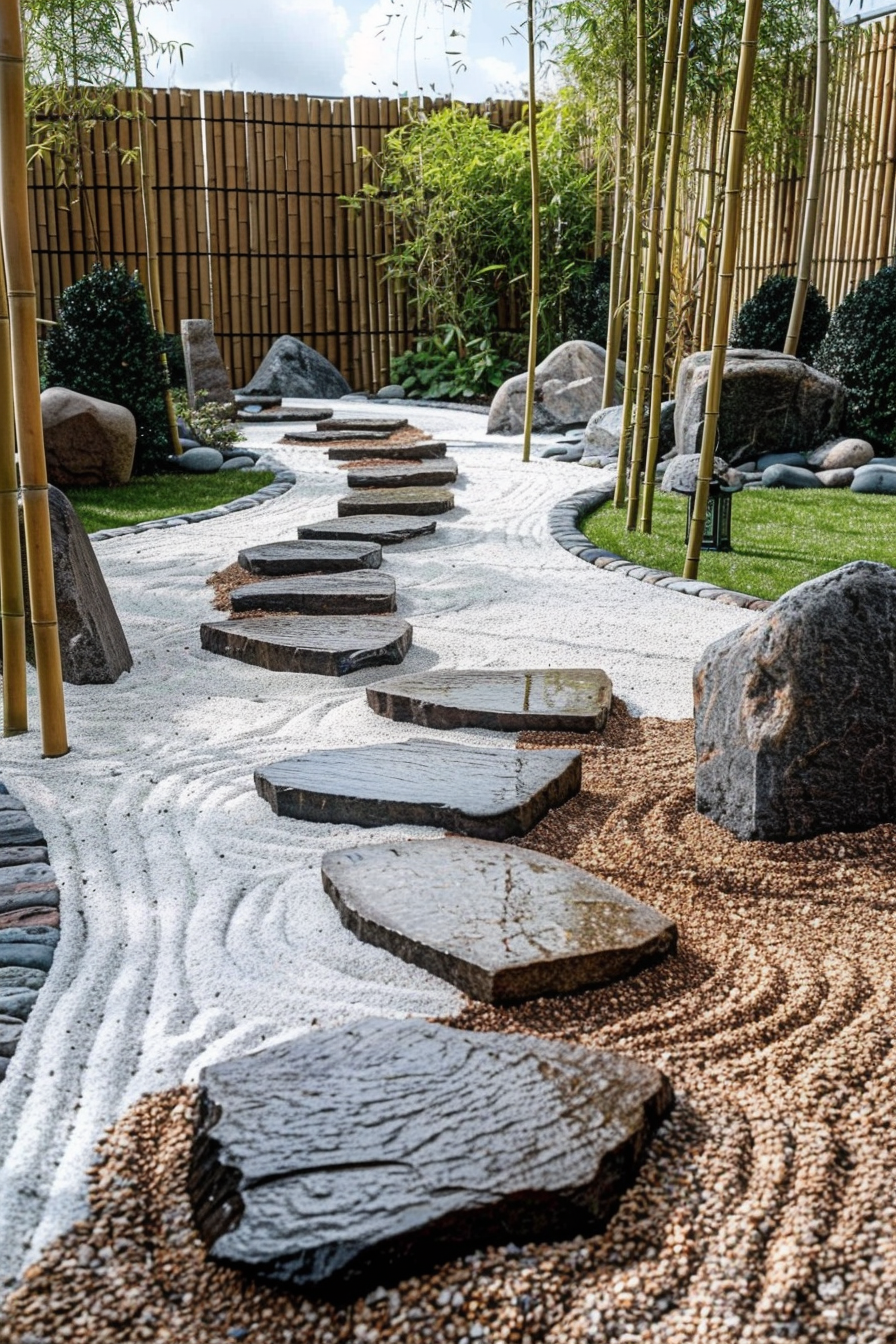
8. Select Subtle, Tranquil Colors
Zen gardens typically feature a subdued color palette, focusing on natural hues like greens, browns, and grays. Choose plants and materials that offer a calm and soothing aesthetic, avoiding bright, distracting colors.
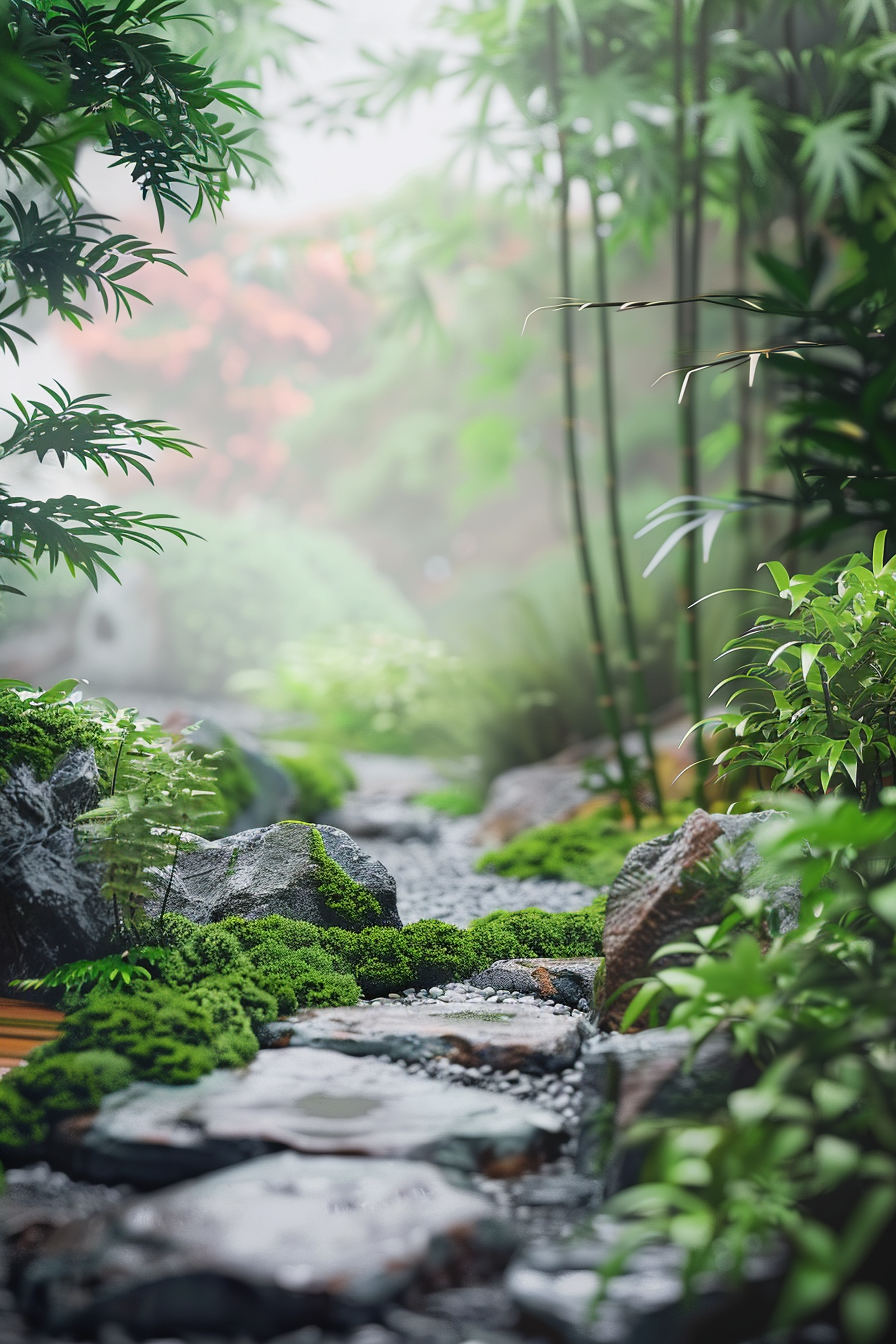
9. Integrate Stone Lanterns
Stone lanterns are iconic in Zen gardens, providing both aesthetic appeal and subtle illumination. Place them thoughtfully along paths or near water features to enhance the garden’s ambiance, especially during evening hours.
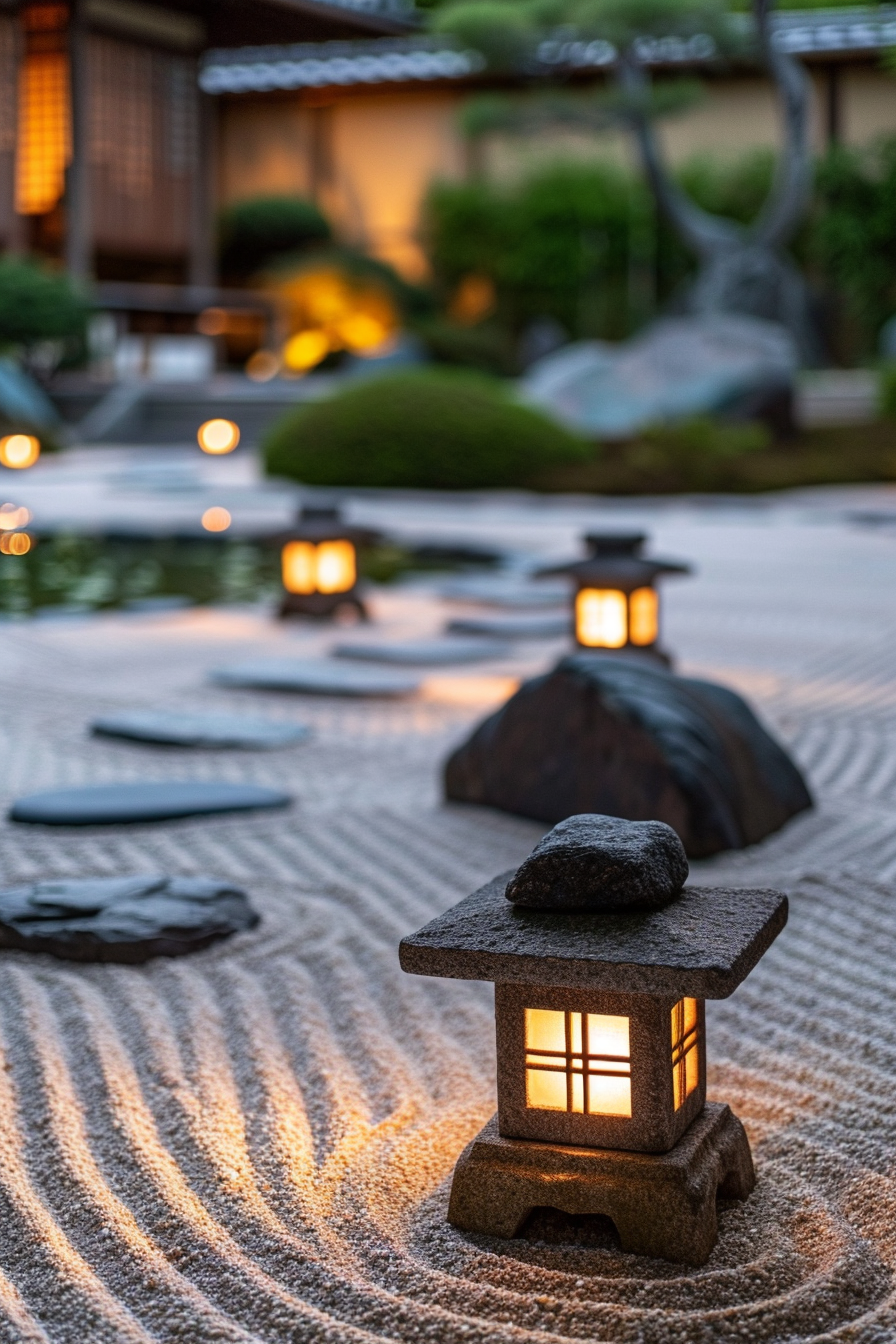
10. Add a Bamboo Fence or Screen
Bamboo fences or screens are ideal for creating privacy and defining the boundaries of a Zen garden. They offer a natural, rustic look that complements the garden’s elements and fosters a sense of seclusion and intimacy.
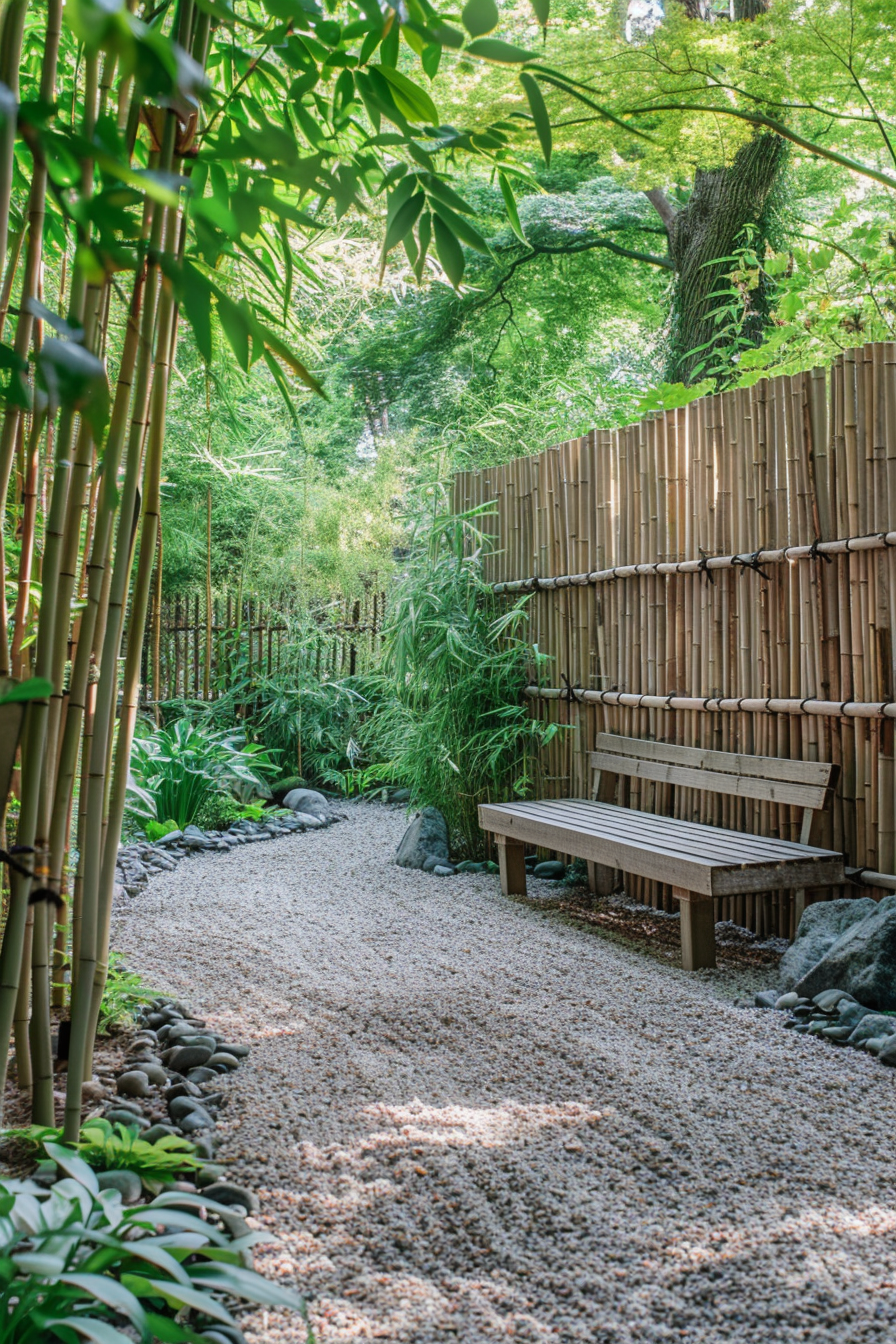
11. Include Symbolic Rocks
Rocks are symbolic in Zen gardens, often representing mountains or islands. Use them as focal points, arranging them in groups to create a sense of stability and permanence, and choose stones that naturally fit together harmoniously.
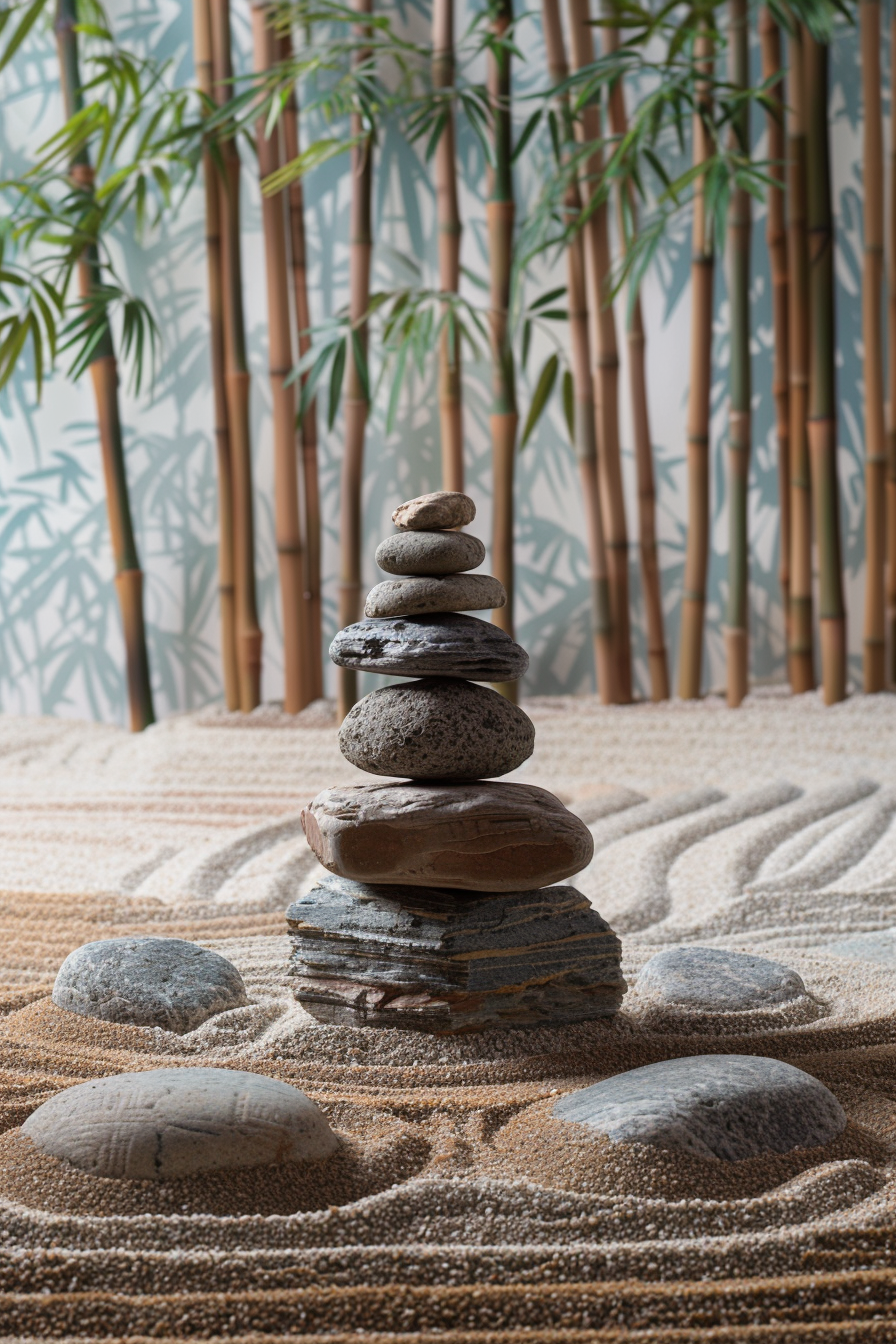
12. Plant Evergreen Shrubs and Trees
Evergreens provide year-round greenery and structure in a Zen garden. Choose shrubs and trees that stay lush throughout the seasons, like pine, juniper, or bamboo, to maintain a constant sense of vitality and growth.
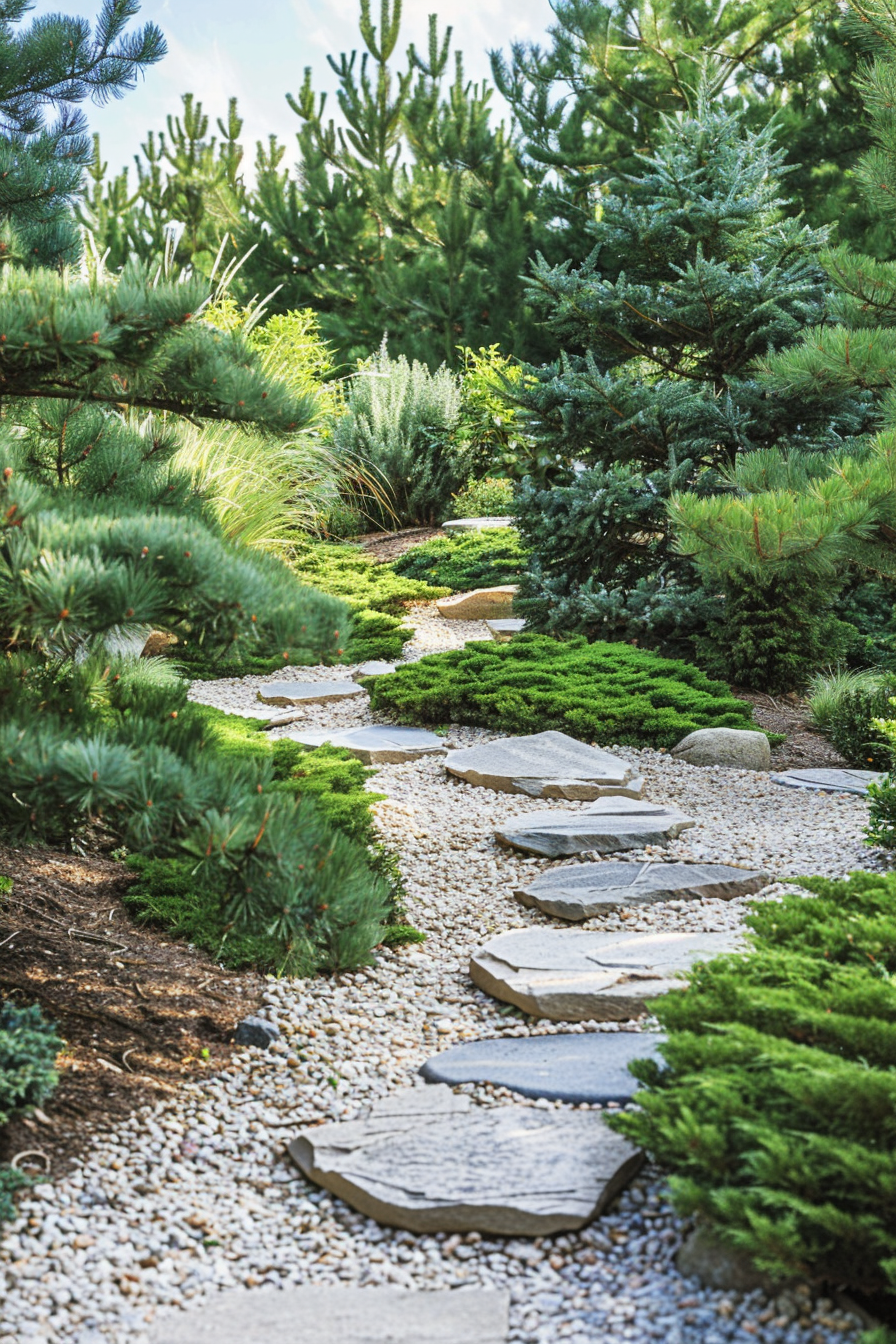
13. Incorporate a Meditation Space
Designate a small area within the garden for meditation or quiet reflection. Include a comfortable seating area or a flat surface where you can sit or lie down, creating a peaceful spot to unwind and connect with nature.
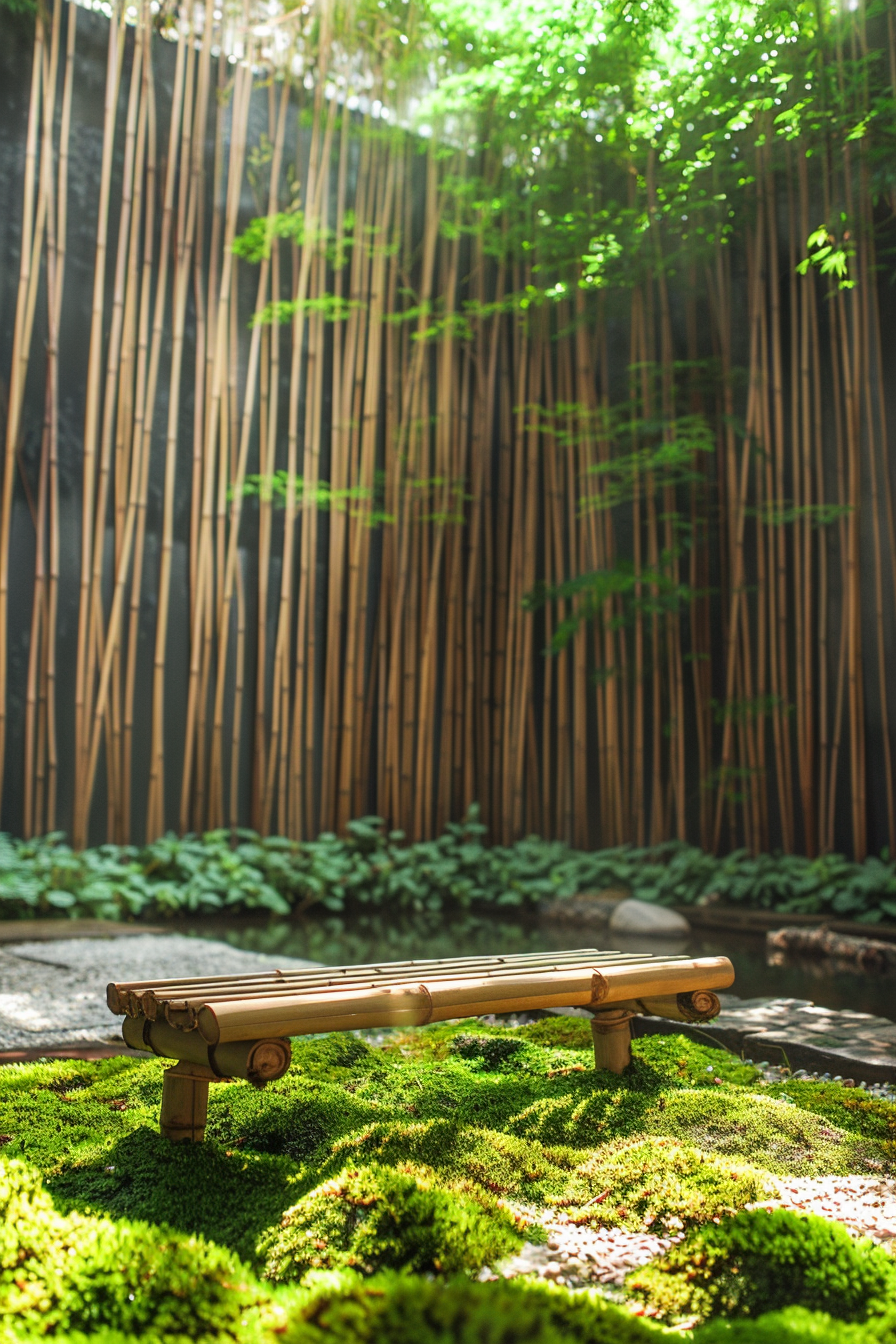
14. Utilize Large, Smooth Stones
Large, smooth stones are perfect for adding visual interest and texture to a Zen garden. Place them thoughtfully to create focal points or to anchor different sections of the garden, blending seamlessly with the natural surroundings.
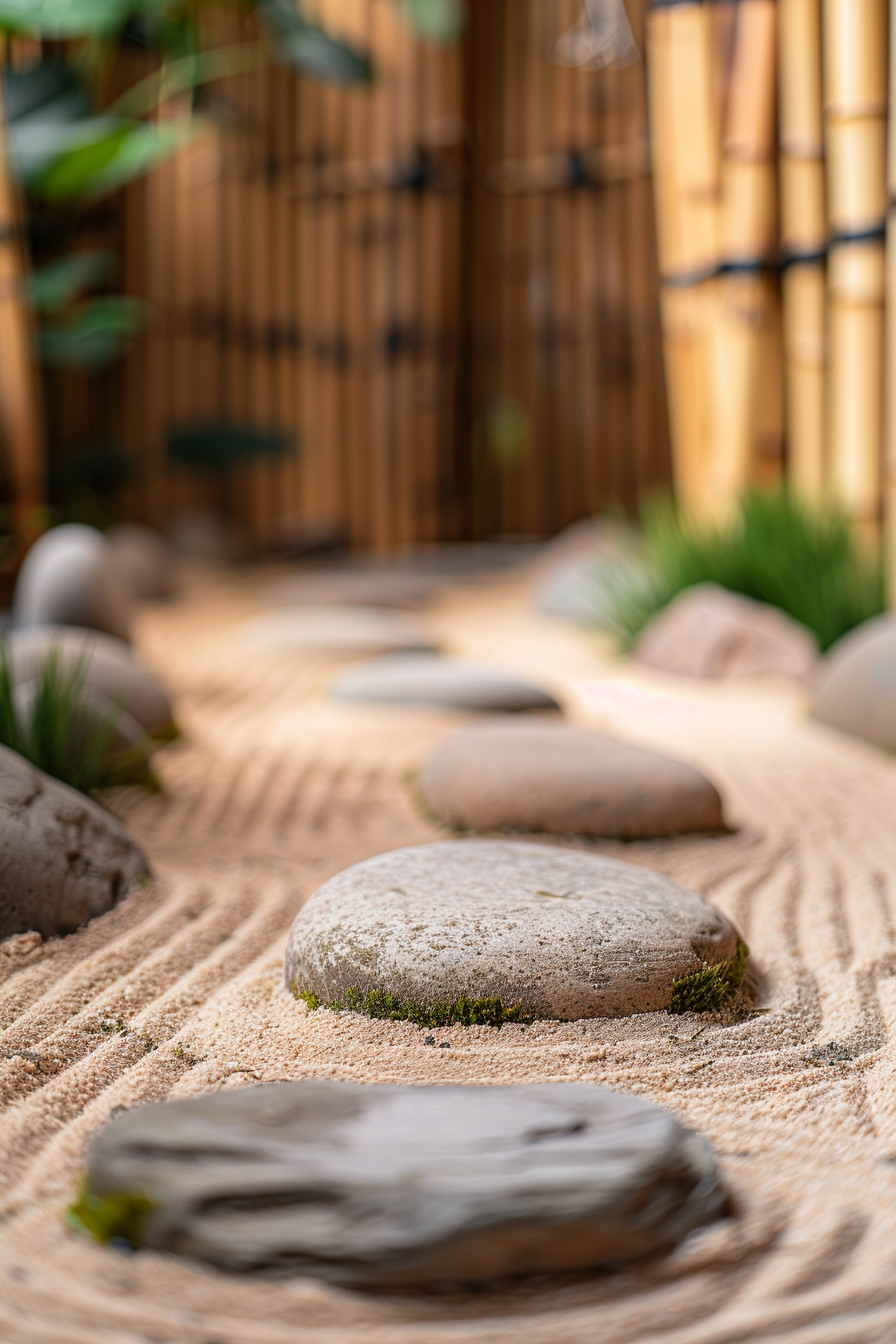
15. Embrace Asymmetry
Unlike many Western garden styles, Zen gardens often embrace asymmetry, reflecting the natural irregularity of the world. Arrange elements in an unbalanced yet harmonious way, allowing for an organic, flowing design that feels both natural and intentional.
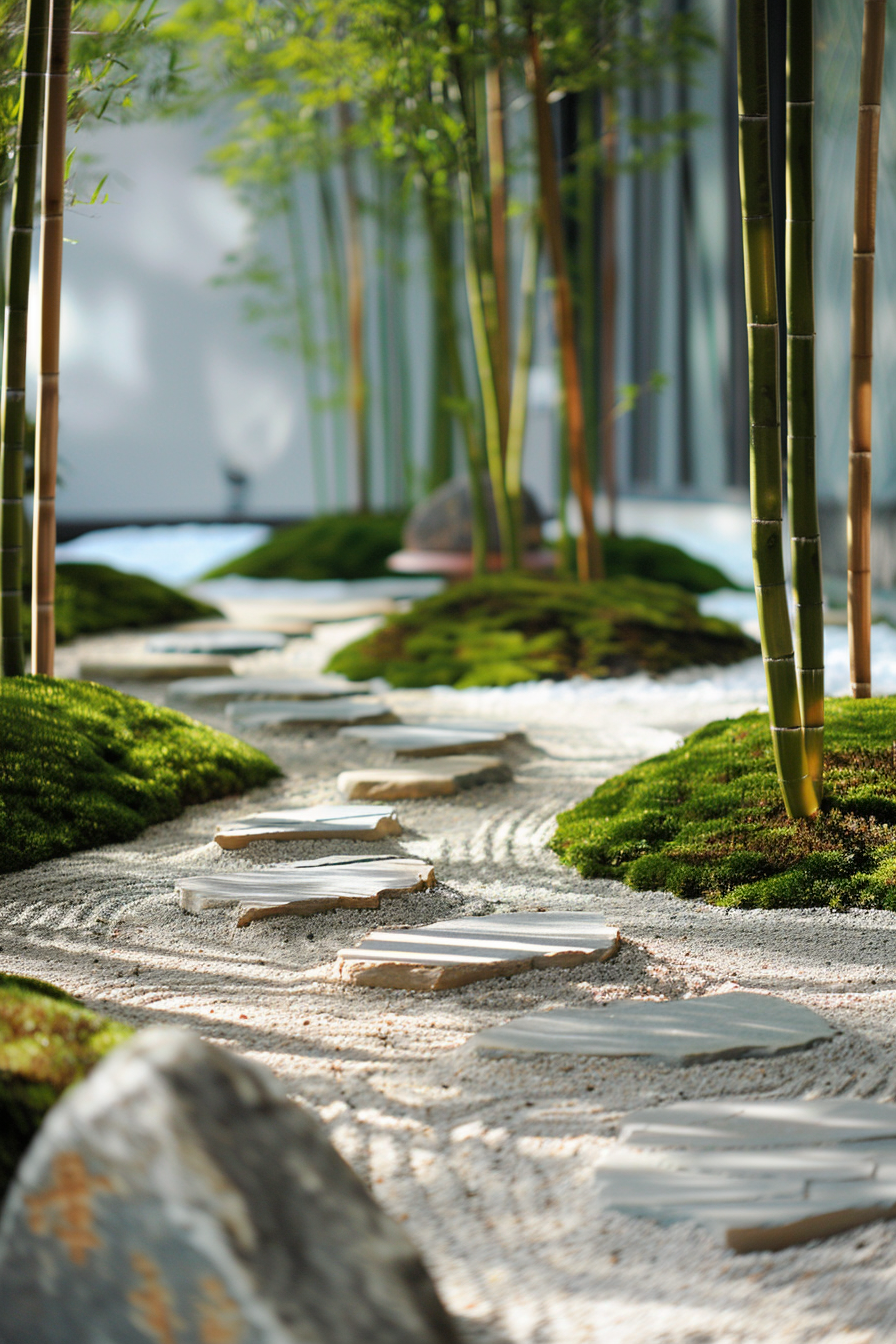
Pulling It All Together
Remember, achieving the Zen look isn’t about perfection—it’s about creating a space that feels good to you. Embrace simplicity, focus on natural elements, and don’t be afraid to let your personality shine through subtle touches.
Quick Tips for Seamless Zen Decor
- Stick to a Neutral Palette: Consistency in colors promotes harmony.
- Embrace Asymmetry: Natural balance doesn’t always mean symmetry—mix it up!
- Let Nature Inspire You: Use elements from the outdoors to decorate your indoors.
- Keep It Simple: Resist the urge to over-accessorize. (Less truly is more!)




